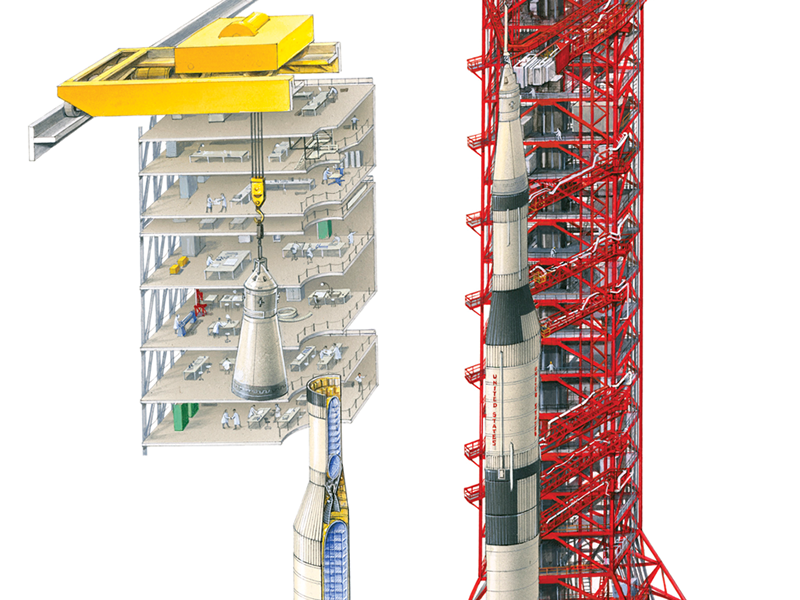See inside the Saturn V rocket

[fototag id=”saturnvrocket”]
Rockets like Saturn V, the one used to launch NASA’s Apollo and Skylab programs, are multi-stage liquid-fuelled boosters. The Saturn V is considered to be the biggest, most powerful and most successful rocket ever built.
The Saturn V was 110.6m tall, 10.1m in diameter and had a payload of 119,000kgs to low-Earth orbit.
There were three stages, followed by an instrument unit and the payload (spacecraft). The total mission time for this rocket was about 20 mins. The centre engine was ignited first, then engines on either side ignited. The first stage lifted the rocket to about 70m and burned for 2.5 mins.
When sensors in the tanks sensed that the propellant was low, motors detached the first stage. The second stage continued the trajectory to 176km and burned for six mins. About halfway through this stage’s ignition, the instrument unit took control of calculating the trajectory.
Second stage complete, solid-fuel rockets fired it away from the third stage. The third stage burned for 2.5 mins and stayed attached to the spacecraft while it orbited the Earth, at an altitude of 191.2km.
It continued to thrust and vent hydrogen before ramping up and burning for six more minutes, so the spacecraft could reach a high enough velocity to escape Earth’s gravity.





